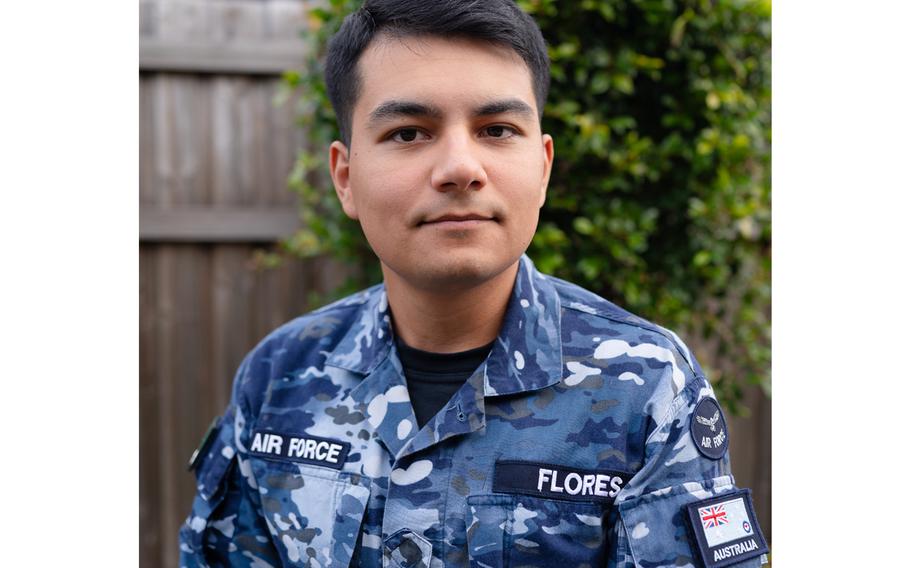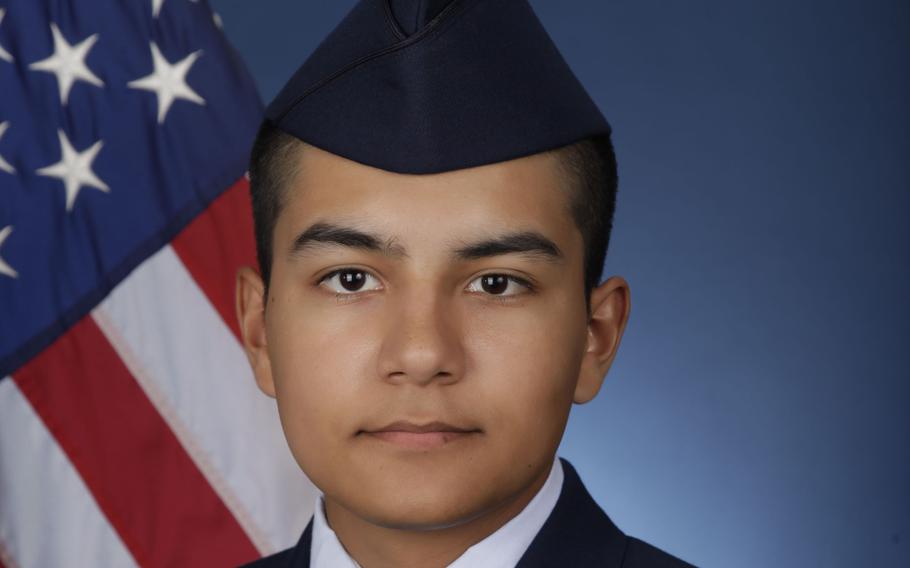
Australian air force Cpl. Lazarus Flores previously served with the U.S. Air Force in Alaska. (Australian Defence Force)
Australia is streamlining a program that allows American troops and soldiers from other nations to transfer to its army, navy or air force, according to Australian Defence Force officials.
The U.S. ally has purchased advanced American-made weapons such as F-35A Lightning II stealth fighters and plans a fleet of nuclear-powered submarines. However, it’s struggling to recruit enough of its own citizens to operate them.
To fill the ranks the country’s government announced this month that New Zealanders living in Australia for a year or more will be able to enlist or commission from July 1. Americans, along with British and Canadian citizens in the country will get the same opportunity starting in 2025.
Also, starting next month the process to transfer serving U.S. troops to the Australian Defence Force will be streamlined, army Col. Kimberlea Juchniewicz, a recruiter with the force, told Stars and Stripes by phone June 20.
“The Australian Government has chosen to grow the Australian Defence Force because it is essential to meet the nation’s security challenges through the next decade and beyond,” Australian Defence Minister Richard Marles said in a June 4 statement.
Addressing recruiting shortfalls required innovation, Australian Defence Personnel Minister Matt Keogh said in the statement.
“We’re being bold in order to grow the Australian Defence Force,” he said.
The Overseas Lateral Recruitment Scheme allows the force to fill capability shortfalls by recruiting skilled military overseas applicants, the statement said.
The program has seen between 40 and 145 foreign troops, including Americans, transfer to the Australian Defence Force each year over the past decade. The goal is to increase that to around 400 a year, Juchniewicz said.
Streamlining aims to speed up transfers and will move the program to a tri-service — army, navy, air force — model that includes space and cyber recruiting. Nuclear submariners are of particular interest as Australia builds its capability, she said.
The program is focused on mid-level ranks such as sergeants, captains and majors across all service branches, she said.
Those recruited will have their move to Australia funded in a similar manner to a U.S. government permanent change of station, Juchniewicz said.

Australian air force Cpl. Lazarus Flores previously served with the U.S. Air Force in Alaska. (Australian Defence Force)
Australian air force Cpl. Lazarus Flores, along with his wife and two children, moved to Royal Australian Air Force Base Amberley in the east coast state of Queensland in March after enlisting at the Australian embassy in Washington, D.C. that month.
A former airman from Texas trained in information technology, Flores learned about the lateral transfer scheme in 2021, while he was stationed at Joint Base Elmendorf-Richardson, Alaska, he told Stars and Stripes by phone from Australia on Thursday.
“I had just separated from active duty and was interested in travelling overseas,” said Flores, who was serving in the Air Force Reserve in Alaska before he transferred.
The Flores family lives in defence force housing near RAAF Amberley. They’ve been enjoying the warm weather in Queensland, “especially coming from Alaska where you are snowed in for most of the year,” Flores said.
Queensland has a lot in common with the U.S., he said.
“There are lot of cowboy hats and lots of big trucks on the road,” he said. “I see kangaroos every day.”
In dollar terms the Australian troops are paid less than Americans, but cost of living in Queensland makes the transfer a good deal, he said.
“It’s a jump in my standard of living,” he said.
The lateral transfer scheme is not for everybody, Flores said, but added: “For those willing to take up the challenge of dealing with culture shift I think it is a great deal.”